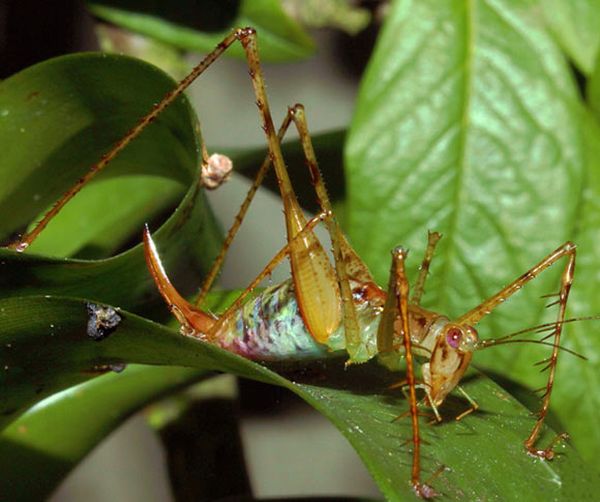Katydids (better known as bushcricket) are nocturnal insects and are predominantly known for their loud mating or love calls. These calls are produced when the males looking for females, rub their forewings together (stridulation).
Recently, in the woods of Colombia and Ecuador a team of entomologists from the University of Lincoln, UK has identified a new genus and three new species (S. aequoreus, S. piercei and S. undulus), of bushcricket, termed as Supersonus. The researchers have recorded the highest frequency ultrasonic calls produced so far in the animal kingdom, from these newly identified species of arthropod.
Most bushcrickets are capable of producing calling frequencies ranging from 5 kHz to 30 kHz. Humans are capable of hearing frequencies of about 20 kHz only. While males supersonus bushcricket produces the highest ultrasonic calls, reaching notes of 150 KHz.
Senior study author, Dr Montealegre-Z explains that male bushcricket calling distant females, produce high frequency love calls by stridulation in which one wing known as scraper is rubbed against the other wing which have ridged surface. The scraper is placed adjacent to a vibrating drum that behaves like a speaker. Though forewings and the drums are comparably smaller in size, they are still capable of producing loud ultrasonic calls.
Researchers using an amalgam of technologies discovered that Supersonus in order to emanate sound makes a closed box using its right wing. This method to emanate sound is also being employed in human created loudspeaker. In electronics large speaker radiate low frequencies, whereas small sized speakers radiate high frequencies. Therefore, Supersonus with their reduced wings are capable of producing love calls at extremely high frequencies.
However, with reduced wings, the arthropods have become incapable of flying. But such high ultrasonic frequencies help them not only to secretly attract potential females, but also keep them safe from eavesdropping predators, like bats. This is because their calls are produced at frequencies which most animals can’t hear. But bats that use echolocation to find their prey, are capable of hearing sounds of 150 kHz and therefore can easily locate bushcrickets and frogs. But fortunately the katydid’s extreme frequency can’t travel long distance and degrade faster, making it difficult for bats to hear their songs. Moreover, katydid keeps their singing time short to avoid bats and have evolved ears that are well versed to identify the echolocation calls produced by the bats.
As of now, researchers are trying to understand the ability of such insects to produce and hear the extreme ultrasonic sound in the air so that they can use this understanding in creating advanced audio technologies and sensitive microphones.
Source: Sci-news




